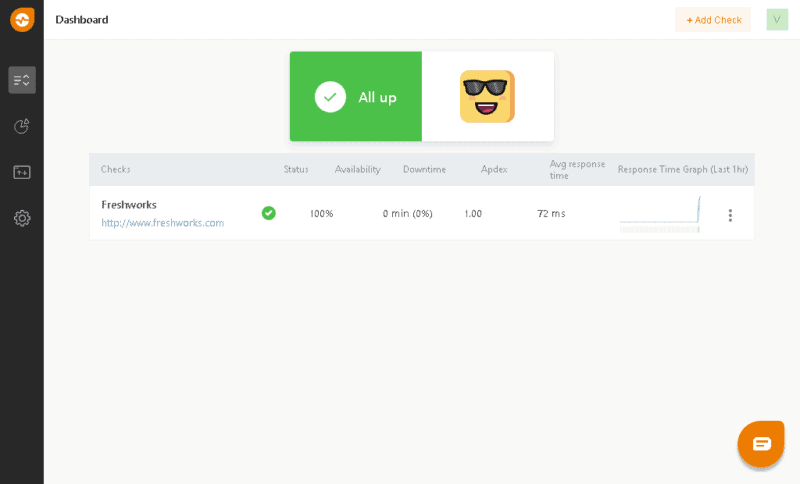
When it comes to websites, maintaining their operability 24 hours a day is essential. Although controlling this can become complicated, there are multiple options on the market to solve this problem.
For this reason, below we explain two fundamental concepts in this field: downtime and uptime, which will help you to maintain availability and operability in your digital assets.
What are downtime and uptime?
Uptime refers to the amount of time a system, server, device or operating hardware takes without interruptions. On the other hand, downtime is the opposite of this definition; because it encompasses the time during which the object is inactive.
These two KPIs are important measures to determine the performance of your hosting. As long as your site is uptime, it will be accessible to any user or potential client. Otherwise, your ability to provide solutions will be limited.
The consequences of downtime on your website

Downtime on your website can bring both monetary and productivity problems. According to Gartner, the average cost of network downtime is approximately $5,600 per minute, which means a loss of $300,000 per hour. However, this process can also wear down your company’s operational levels. Each error leads to an average of 23 minutes of refocusing, which slows down the work.
These errors can be caused by predictable factors, such as obsolete software and hardware, or by uncontrollable issues, such as natural disasters. In any case, these events generate repair costs, ranging from the purchase of new parts to data recovery. In addition to economic losses, downtime can entail:
- Dissatisfied users
- Damage to the company’s branding
- Loss of money and information
- Errors in human-managed operations
- Difficulty making timely decisions
- Market downturn
- Non-compliance with regulations
- Service interruption
To do this, you can estimate the cost for your hosting by applying the following formula:
Cost of downtime (per hour) = lost revenue + lost productivity + recovery costs + intangible costs.
4 advantages of monitoring the company’s website
By monitoring your website, you will be able to avoid downtime and the consequences that this entails. Besides, you will gain the following competitive advantages:
#1 You will access the status of your systems in real time

With web monitoring, your network will be under constant review and analysis to avoid all kinds of failures and errors.
In this way, your company’s technological resources will be organized, such as: bandwidth, access to servers, use of RAM memory, and system speed; as well as malware control and stop counting. This will allow you to effectively verify the status of your hosting.
In this way, you could check in real time the multiple problems that may arise, to attack them quickly and safely. This also helps you to work under a preventive approach; because it prevents the spread of vulnerabilities before it’s too late.
# 2 You will detect the origin of the incidents
Keeping your systems under constant review will allow you to make reports that reveal where the origin of the bug is. In such a way that you can attack him before, during and after the incident. This can reduce the time of response to the problem, it will help you to know in depth the behavior of the IT devices of your company, and to work in its weak points.
# 3 You can set up alarms
Downtime can be crucial in any company. For this reason, having more than one mechanism to avoid it is fundamental for the productivity of the organization. Including smart alerts that warn you in advance of errors and prioritize your organization’s specific services is helpful to respond immediately to any threat.
These alarms can also show you new opportunities to improve your IT department. Because they can give you information about outdated hardware or software, which will work as a scheme towards updating your resources and, consequently, improving your services.
# 4 You will cut costs
The sum of the above three advantages results in a global benefit: monitoring your website will save you money.
Previously, we showed you how crucial downtime and the incalculable costs it brings with it can be for your business. However, most of these are attackable if you have a prevention system.
Freshping, free suite for Uptime monitoring

Freshping is a free tool, which allows you to monitor the performance and availability of websites. In this way, the IT team can continuously track the uptime of your hosting.
Having a tool of this type will help you increase your company’s capacity for action in the event of any interruption that may arise, thus obtaining the following benefits:
- Instant downtime alerts
- Your users will be able to see the level of your site
- Monitor up to 50 different URLs
With this tool, you can have one minute of a testing interval, multi-user initiation, application integration and extra protection against false alerts. All this for free, avoiding downtime at all costs.
You can also have access to reports, which show you metrics such as availability, time out, recovery time and response time in one hour, last 24 hours, last 7 days and last 30 days.
In addition, Freshping can help you get the most out of your web applications and be in tune with these advantages we had reviewed, which you can leverage contacting us.



